Sembl thinking, ancient boards
One thing connects with another — one thing resembles another, or is distinctly different from it, or overlaps with it, leads to it, contains it.
There are many ways one thing and another can be connected, and people have been playing Sembl-like games, making connections on “boards” much like the Sembl boards that Cath illustrated in her post earlier today, for centuries. In fact, graphical diagrams of linked concepts have long played a significant role at the intersection of art, thought and science.
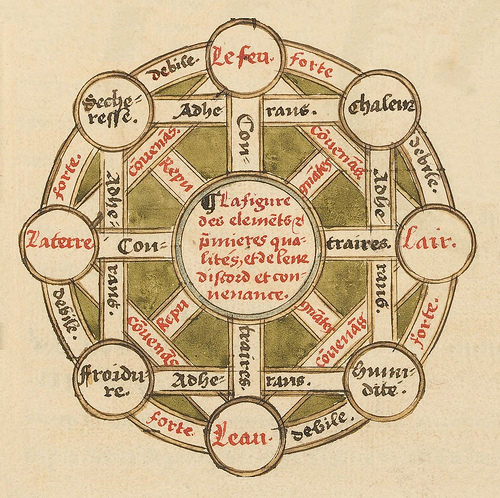
The glorious board above is taken from a manuscript of the De Mundi Sphaera of Oronce Finé (French, 1494 – 1555) at Harvard University’s Houghton Library. It shows how the four “elements” of early science interact, fire being the opposite of water, cold and its opposite, heat, both being able to coexist with either dryness or humidity but not both at once, and so forth.
You can see more of Finé’s diagrams here.
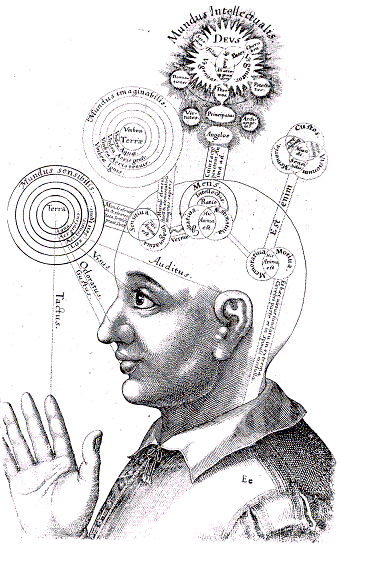
I’m particularly fond of this particular diagram by Robert Fludd (British, 1574 – 1637), because it shows that the connections can be between (a) objects outside us, brought to our attention by the senses, (b) ideas linking inside the mind to one another, and (c) insights gained by inspiration or vision.
The diagram comes from Fludd’s 1619 work Utriusque cosmi maioris scilicet et minoris, and you can find other diagrams of his in a slideshow at this University of Oklahoma site.
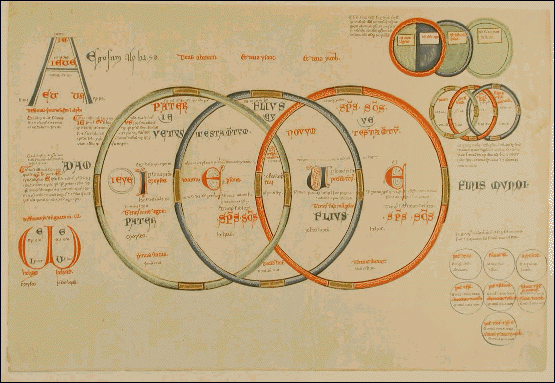
The good abbot’s diagram shows world history unfolding in three epochs, that of the Father (in Old Testament Times) with its multitude of commandments, that of the Son (from the New Testament to his own day) when only two commandments, to love God and one’s neighbor, were needed — and the gloriously anticipated age of the Spirit, to begin in 1260, in which no commandments would be required since the Spirit would speak in the hearts of humankind. Again, you can see more of his diagrams in this auto-downloading powerpoint presentation from the University of Virginia.
Joachim’s views were highly influential in the middle ages, and traces of them can be found more recently in the Third Reich of the Nazi’s and in Lenin’s concept of the Withering Away of the State — but that’s another story…


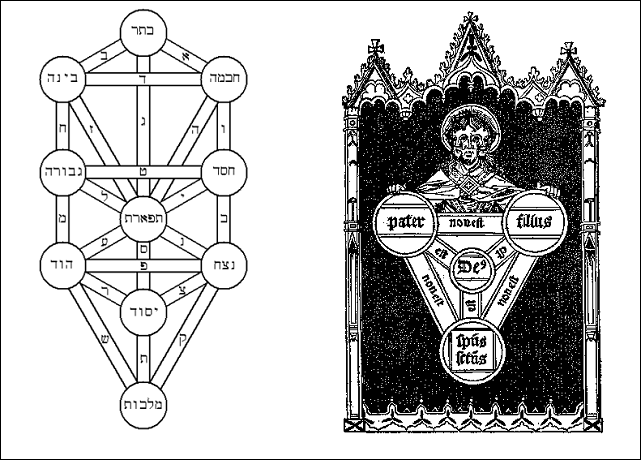
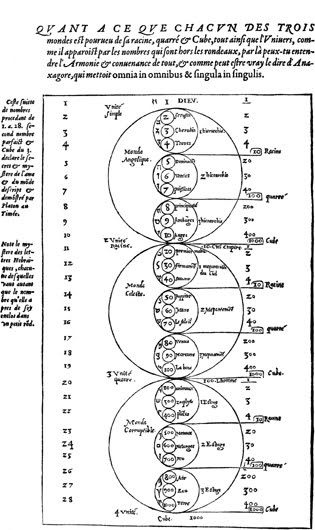
Trackbacks & Pingbacks
[…] I was searching for illustrations for my piece on ancient Sembl boards, I was under the impression that Rembrandt had made an illustration of some old sage having a […]
Leave a Reply
Want to join the discussion?Feel free to contribute!